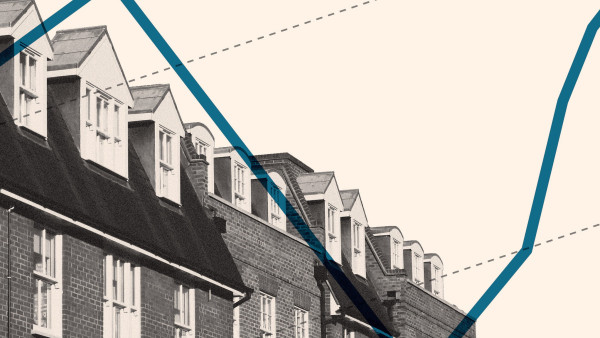

There is a three-pronged crisis facing the fastest growing and arguably most important segment of the UK housing market, the private rental sector, which provides homes for 19 per cent of households.
First, there is falling affordability. Second, the energy performance of our ageing housing stock is unfit for net zero. And third, there is a landlord exodus reducing supply.
Price, quality and volume are all getting worse for residents, and yet the value of this part of the market is an estimated £1.4tn. By contrast, the FTSE 100 was worth £1.78tn at the end of September 2022.
Based on value alone, the private rental sector warrants the attention and funding of institutions.
Add to this the opportunity to provide solutions to growing environmental, social and governance problems, and the private rental sector quickly starts to look like the next darling of institutional investors struggling to find inflation-beating yields and stability in the stock market.
The problem of affordability
Buying a home in the UK is expensive. Average house prices are more than 10 times average household incomes. This problem is at its worst in high-demand areas such as London, which have always been expensive.
Affordability issues have worsened in the context of post-Brexit, post-Covid, and mid-Ukraine turmoil. As is the case for the wider economy, house price inflation is being driven by shortages of supply.
Other parts of the economy stalled during the pandemic, but the housing market exploded. The temporary stamp duty reduction designed to combat the impacts of Covid on the housing market acted as a catalyst, but this was not the only cause of house price growth.
Demand was boosted by a glut of people wanting to upsize. Thanks to historically low interest rates and higher savings as a result of repeated lockdowns, many were also more able to afford to buy their own homes.
On the supply side, new housing was curtailed by planning backlogs from lockdown alongside labour and material shortages and inflationary pressures spiralling out of Brexit and Covid. Construction material prices rose by more than 20 per cent per year in recent years, according to the Construction Leadership Council.
Buoyant demand combined with stagnant supply means an ever-growing shortage of housing in general and affordable, quality, energy-efficient homes in the places people want and need to live in particular.
As the cost of buying a home grows, affordability in the rental market becomes more important. Demand keeps growing with demographic changes and the rise of ‘generation rent’, who cannot or do not want to purchase their own home.
The affordability problem is worst in big cities as life normalises, driving private rents higher and higher – in London, rents are up 17.8 per cent in a year. As a result, lower-income renters can now expect to pay up to 40 per cent of their income to live in an averagely-priced rental home.
This is far beyond the often-used definition of affordability of 30 per cent of household income.
The UK has experienced no real wage growth since 2008, and people’s incomes are increasingly stretched by the cost of everyday goods shooting up, creating an unsustainable situation.
The problem of falling supply
Supply is shrinking due to a landlord exodus. With 168 laws and regulations governing residential property and its management, including minimum energy efficiency standards, alongside rising interest rates and the impact of Section 24 on tax bills, it is no surprise small landlords are re-evaluating, with many selling up.
Rental housing stock available was down by 46 per cent in Q3 2022, illustrating the ‘landlord exodus’. The consequences include major shortages of quality, affordable rental housing in the places people want and need to live.
The problem of quality
The UK housing market faces a unique challenge of quality, with direct, painfully expensive and even dangerous consequences for renters.
The government’s latest English Housing Survey reveals that over one-fifth of private rental homes are deemed "non-decent" and contain category one hazards including mould growth, asbestos, and lead poisoning.
Our poor-quality rental housing is estimated to cost the NHS £340mn a year – just £10mn short of what Brexiteers claimed we would get from leaving the EU. Clearly something needs to be done.
The age of Britain’s housing also means it is deeply energy inefficient, which will make this winter even harder for many. Two-thirds of homes have EPCs below C, and the consequence for renters is higher energy bills.
The Future Buildings Standard will ensure homes built from this year are more energy-efficient. However, 80 per cent of the UK’s housing stock in 2050 is already in existence, so this only solves a small part of the problem. Minimum energy efficiency standards seek to tackle the efficiency of the rest. A key question is: who pays?
The solution
Part of the three-pronged problem is underinvestment, and here lies the opportunity for patient institutional investors. The most sustainable building is the one already built, so a mass retrofitting campaign is needed if we are to ever meet our net zero targets.
Upgrading homes from an EPC D to B rating results in more than 50 per cent fewer emissions, representing two tonnes of CO2 per year per house.
Clearly there is a role for the government to play. However given the scale of the challenge, estimates for the cost of retrofitting the UK’s housing stock sit between £300bn and £500bn – policymakers need to look for alternative sources of finance outside of public spending.
At a time of household budgets being squeezed, the idea of passing the bill on to consumers is not politically viable.
There is a third way: harnessing the weight of institutional capital looking to enter the UK residential market.
By transforming the ownership in the rental market, which remains dominated by non-professional landlords (82 per cent of landlords owned fewer than five rental properties in 2021), we can improve the quality of our housing while meeting the government’s ambitious sustainability goals.
This also solves the problem institutions are facing: a shortage of stable investments that generate steady, inflation-beating income streams to match their liabilities, while providing opportunities for ESG-friendly investments.
The challenge and opportunity is how to scale investment in the fragmented UK private rental sector. Resolving this requires technology and data to efficiently identify, acquire and then accurately forecast the cost of retrofitting existing homes.
By aggregating portfolios of individual rental properties and targeting where the depth of demand is greatest – the mid-market – it is possible to provide institutions with a reliable alternative to fixed income investments such as sovereign bonds while delivering more sustainable, higher quality homes for rent.
IMMO recently announced plans to use £1bn of institutional investment to do exactly this to more than 3,000 homes across the UK.
The Department for Levelling Up, Housing and Communities estimates the average cost to upgrade a privately rented property to an EPC C rating in the UK to be around £7,650, meaning our plans could save UK homeowners, landlords and taxpayers a collective £25mn.
This is only the start, the eventual saving could be far greater. Investment managers such as Mark and Moorfield have also recognised the huge opportunity that lies in fixing our broken rental market.
The benefits of a more institutionalised rental market do not end with better insulated, more affordable homes. A thriving, functional rental market also allows the UK to build a more flexible workforce capable of plugging skills gaps by providing assurances to skilled labour that they will always have a great home and community to live in, no matter where they relocate.
Since the 1980s, rapidly growing equity markets and the fact that households have increasingly shifted from direct stock ownership to holdings via asset managers mean that institutional investors have had the financial capabilities to enact real, long-term changes.
In the same way that they improved transparency and accountability across the corporate world, institutions are now well-placed to transform the private rental sector into one that is capable of tackling rental housing shortages, evaporating affordability and climate change.
Anna Clare Harper is head of insights at IMMO



